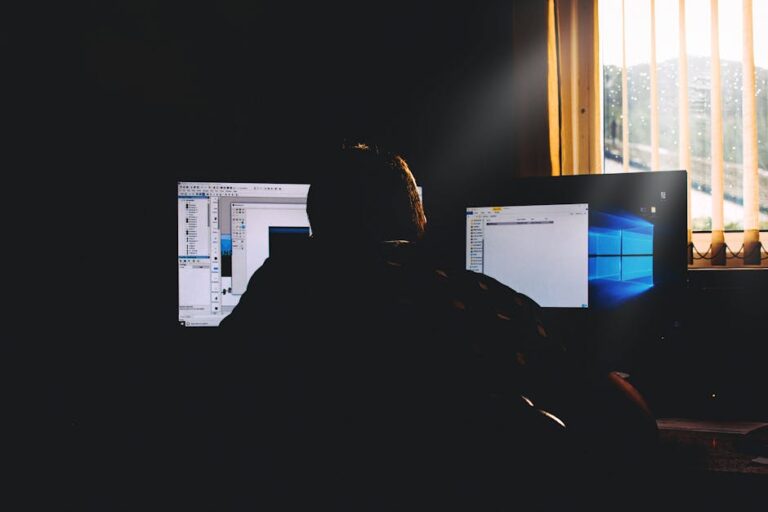Table of Contents
IRCON share price, huh? Heard it a hundred times. Everyone wants a crystal ball, don’t they? And usually, they want me to polish it for ’em. Like I got some secret handshake with the market gods. I tell ’em, kid, the market’s a wild animal. Got a mind of its own.
My desk, it’s piled high with reports. Always has been. Twenty years, maybe more, watching these things move. You see patterns. You see the same damn mistakes made over and over. People buy high, sell low. Standard. Like clockwork. It’s a laugh, sometimes. A sad, pathetic laugh.
IRCON. Yeah, Ircon International. Good old government company. Railways, roads, bits and pieces overseas. Heard they got some project in Sri Lanka still humming along, or trying to. These government firms, they’re a different beast than the private boys, that’s for sure. Slower, often. More red tape than a bloody tax office. But they get the big contracts. The ones that private guys claw their eyes out for.
You ask me about 2025. Seriously? You want me to tell you where it’ll be in… what, eighteen months? Come on. I ain’t Nostradamus. But I can tell you what I’m looking at. What an old hand sees when the numbers get flung out there.
First off, the government’s infrastructure push. It ain’t slowing down. Not with elections always on the horizon, or just past, or coming again. Doesn’t matter which party’s in charge, they all want to show off bridges and high-speed rail. Or at least, they want to say they want to. That’s Ircon’s bread and butter. Big, fat contracts from Delhi. Guaranteed work, mostly. They don’t have to scramble like some of the smaller outfits.
I was talking to a bloke from Ghaziabad just last week. He’s got some land near a proposed freight corridor. Said Ircon was sniffing around, surveying. That’s a good sign. Means boots on the ground, actual work. Not just talk in some ministry building. That’s what you want to see if you’re looking at a stock. Real work. Shovels hitting dirt.
Government Backing and Project Pipeline
You ever wonder if IRCON’s a good long-term investment? People ask me that all the time. My usual answer? What’s your definition of long-term? Five years? Ten? This isn’t exactly a tech start-up that’s gonna jump 500% overnight. This is infrastructure. It’s slow and steady. Like a freight train. Which, ironically, they build.
The company’s got a pretty decent order book. I mean, last I saw, it was chunky. Government projects, they don’t get cancelled easy. Slowed down, sure. Delayed, absolutely. But outright canned? Rare. That provides a floor for the business, you see. A solid base. It’s not flashy, no. But a reliable paycheck for the company. Which means, eventually, maybe, for the shareholders.
Now, you gotta remember, these PSU stocks, they often move to a different drumbeat. They’re not always pure market play. Sometimes, the government’s got its own agenda. Disinvestment, strategic sales, all that jazz. That can inject some volatility, or a sudden boost. Or a sudden drop, mind you. Depends on the mood of the chaps in power.
I saw Rail Vikas Nigam Limited (RVNL) make some real moves last year. Similar kind of operation, also railway focused. Folks got excited. Ircon often lags or leads that pack a bit. You look at them both, you get a feel for the sector. Don’t just stare at one chart. Look at the whole picture.
Larsen & Toubro (L&T)
Now, compare Ircon to someone like L&T. L&T’s a giant, a behemoth. They do everything. Nuclear plants, ports, airports, defense. They’re diversified. They’re professional. They’re sharp. You look at their balance sheet, it’s usually clean. Their management? Top-tier. They don’t mess around.
IRCON’s good, don’t get me wrong. But L&T, they’re the heavyweights. They’ll muscle their way into any big project. And they deliver. So, if you’re looking at the infrastructure pie, L&T probably eats the biggest slice. Their share price moves differently. It reflects a much broader economic outlook. IRCON’s more tied to government spending and railway projects.
So, if you’re asking “what affects IRCON’s share price?” Well, government spending, obviously. election cycles. Interest rates – cost of borrowing for projects, you know. Commodity prices, steel, cement. A big jump in those and their margins get squeezed. International projects – currency fluctuations, political instability in places like Sri Lanka or Bangladesh. You can’t ignore that stuff. My mate in Cardiff, he watches the coal prices like a hawk. Different industry, same principle: input costs bite.
Competition and Margins
These construction outfits, it’s a cutthroat business. Bidding wars. Low margins sometimes. Especially in India, where everyone’s trying to undercut the next guy. Ircon, being a PSU, they probably get a bit of a leg up on some bids. A ‘strategic’ advantage, shall we say. But they’re not immune to the pressure.
Dilip Buildcon
Then you’ve got the private players, the ones with a real hunger. Dilip Buildcon, for instance. They’ve been aggressive. Really pushing. Their share price can be volatile. They win a big road project, boom. Lose one, or get hit with delays, tough. Their whole story is about project execution and speed. Ircon’s often about scale and stability. Different flavors of risk, same sector.
Ashoka Buildcon
Ashoka Buildcon is another one. Roads, bridges. They’re good at what they do. But they’re not government-backed in the same way Ircon is. Their funding models, their debt levels, all that becomes more critical. For Ircon, the government’s balance sheet is effectively behind them. A silent guarantor, sometimes. That eases a lot of fears for investors. Or should, anyway.
So, is the government policy going to keep impacting IRCON? Of course it is. That’s their lifeblood. Railway expansion plans. Dedicated freight corridors. Bullet trains. Whatever the flavor of the month is in Delhi. If they announce a massive railway upgrade budget, Ircon’s gonna get a piece. If they cut it, then it’s a different story. Simple as that. You don’t need a fancy algorithm for that. Just a pair of ears and a newspaper. Or, these days, some flashing lights on a screen.
Debt and Deliveries
Every time I look at one of these infrastructure companies, I check their debt. Always. Construction is capital intensive. You need big money upfront. Then you hope to get paid on time. Government often takes its sweet time, too. So, high debt can be a killer. You wanna know if IRCON’s got its act together on the balance sheet. I mean, they’re a government firm, so maybe they can lean on the banks a bit harder. But still. Debt is debt. It costs.
Global Ambitions
They’re trying to do more international work, too. That’s a bit of a gamble sometimes. New markets, new risks. Political stuff. Currency stuff. Sri Lanka, Bangladesh, Nepal. Good for diversification, maybe. But I’ve seen more than one company burn its fingers chasing overseas dreams. Don’t believe all the hype on the global expansion. Some of it’s just for show. Some of it pays off big. Depends who’s doing the negotiating.
GMR Infrastructure
Now GMR. They’re airports, energy, roads. A completely different kettle of fish. More diversified, again. Private. They’re building whole ecosystems, basically. They’ve had their ups and downs, believe me. But they’re not reliant on the railway ministry for their next meal. That gives them a bit more freedom, and a bit more risk. If air travel slows down, GMR feels it. Ircon? Not so much, unless trains stop running. Which, in India, ain’t gonna happen.
What are IRCON’s major projects? You can usually find a list on their annual report. Or just Google it. They’ve been involved in the Udhampur-Srinagar-Baramulla Rail Link, big deal. Railway electrification. Road projects under NHAI. Overseas, some railway lines in Sri Lanka, maybe some work in Bangladesh. They’re not shy about putting out a press release when they bag something big. Keep an eye on those. They’re not just PR. They tell you where the money’s coming from.
Analyst Chatter vs. Reality
You’ll hear analysts on TV, they’ll talk about “upside potential” and “target prices.” Most of it’s hot air. They’re paid to talk. Not always right. I listen to what they say, sure. But then I check it against what I see happening on the ground. You know, actual trains running. Actual roads being built. That’s the real indicator. The smell of asphalt. The clang of steel. Not some fancy spreadsheet model.
My take? These PSU shares, like IRCON, they’re often about consistency. They might not give you the stratospheric returns of some private sector darlings, but they usually hold up better in a downturn. The government’s not going to let them just go belly up, usually. They’ll prop them up if they have to. Political optics, you know.
Should you buy IRCON shares now? Ha. That’s the million-dollar question, isn’t it? I can’t tell you to buy or sell. That’s for your broker, or your own gut, to decide. What I will tell you is this: look at the long game. Don’t panic. If the government keeps spending big on infrastructure, if they deliver projects on time, if commodity prices stay reasonable, then IRCON’s got a steady road ahead. But if there’s a big policy shift, or a recession, or a massive spike in material costs, then all bets are off. It’s not a set-it-and-forget-it thing. Nothing ever is.
Nagarjuna Construction Company (NCC)
NCC, Nagarjuna Construction Company. They’re another player. Been around a while. Roads, buildings, water supply. Again, a broad portfolio. They compete with Ircon on some fronts, but their overall business mix is different. You gotta understand that. It’s not just “construction company.” It’s “what kind of construction,” and “who are their clients?” IRCON’s main client? The government. That’s a huge distinction.
Some folks reckon these public sector units are too slow, too bureaucratic. And sometimes they are. Absolutely. But they also get the work that no one else can touch. The strategic stuff. The national projects. That’s a double-edged sword, I suppose. Stability on one side, lack of agility on the other. But for a shareholder, stability isn’t always a bad thing, is it? Especially in a choppy market.
I remember watching something like Engineers India Limited (EIL) back in the day. Another PSU, consultancy, engineering. They’d grind along, solid dividend, nothing flashy. Then suddenly, some big policy shift, and they’d jump. Or drop. It’s never just about the company. It’s the ecosystem. Who’s pulling the strings.
ESG and Social Impact
You hear all this talk about ESG now, don’t you? Environmental, Social, Governance. For a company like Ircon, which builds massive infrastructure, the environmental impact is huge. They’re going to face scrutiny. Social impact, too – land acquisition, displacement. It’s not just about the profit, they say. It’s about responsibility. I mean, good on ’em if they do it right. But it costs. And cost eats into profit. Something to keep in mind.
KEC International
KEC International, power transmission, railways. They’re another one. You start seeing how these companies overlap, and where they specialize. KEC is strong in power, something Ircon touches but isn’t a core. Knowing these differences helps you understand where Ircon fits in the bigger picture. Are they expanding into power transmission big time? Or are they sticking to their railway knitting? My guess is the latter for the most part. They know what they’re good at.
Look, IRCON’s not a bad company. They’re a solid, if unspectacular, player in a critical sector. India needs infrastructure. Lots of it. And Ircon’s going to build some of it. That’s the simple truth of it. Whether that translates into a share price jump for you in 2025? I wouldn’t bet my house on it. But I wouldn’t write it off either. It depends on a lot of things. And your own tolerance for boredom. Because sometimes, these things are just plain boring. And that’s okay. Boring sometimes means steady. Which ain’t bad.
My advice? Always do your own homework. Read the damn annual reports. Don’t just trust some yahoo on the internet. And definitely don’t trust me when I’m rambling on. I’m just telling you what I see. Take it or leave it. This isn’t financial advice, mind you. This is just how an old dog sees the chase. And the chase, it just keeps on going. It always does.












